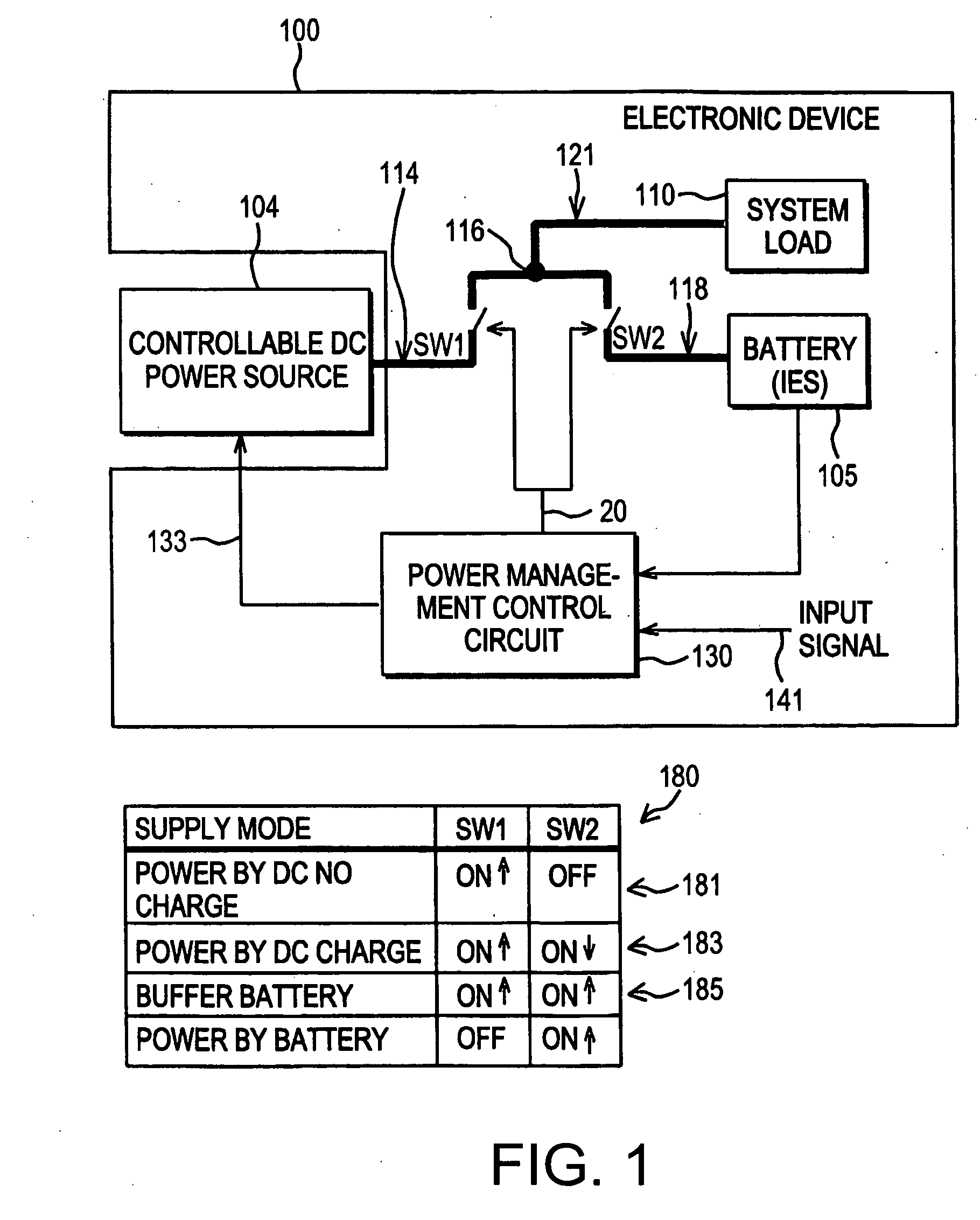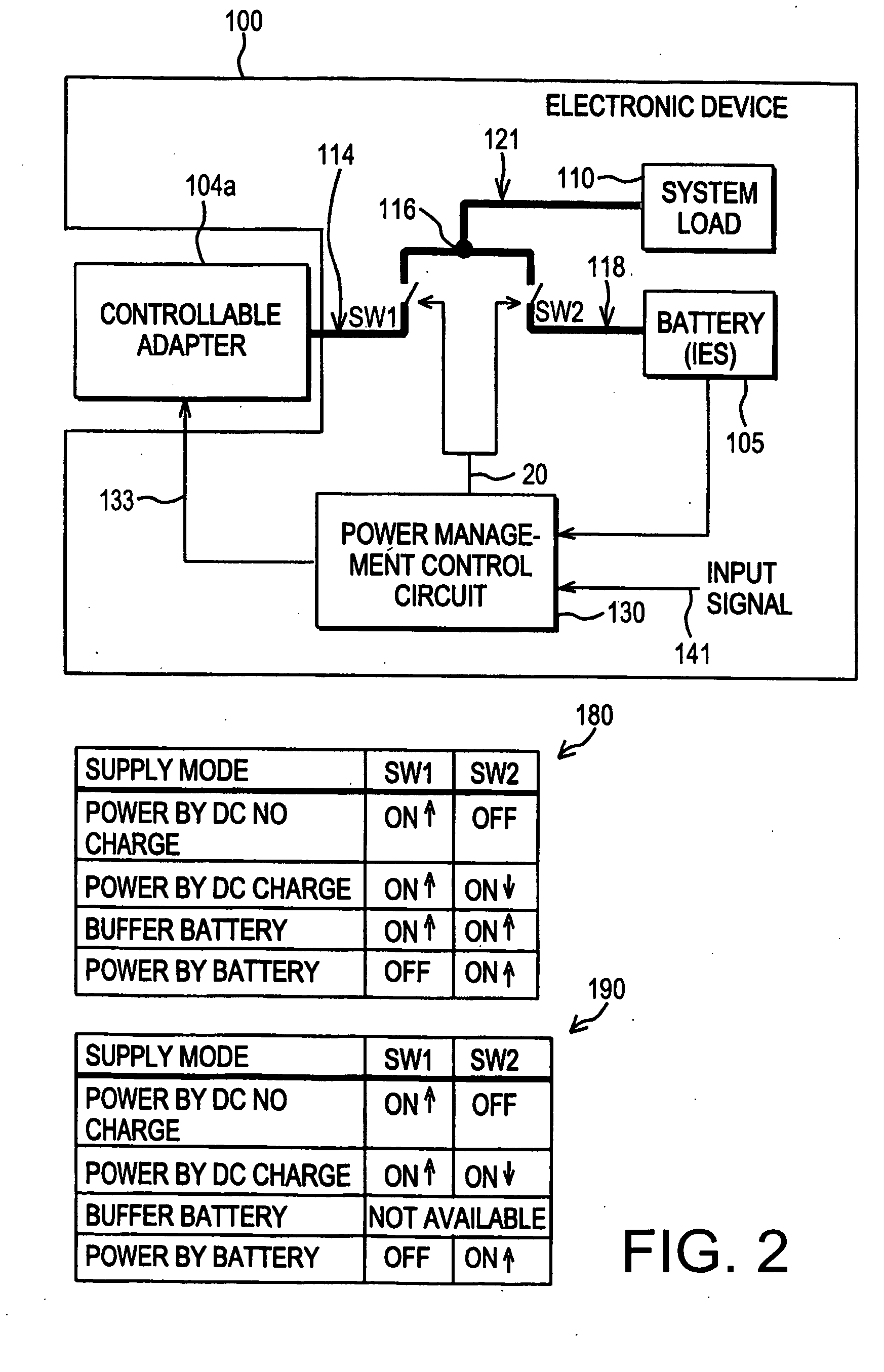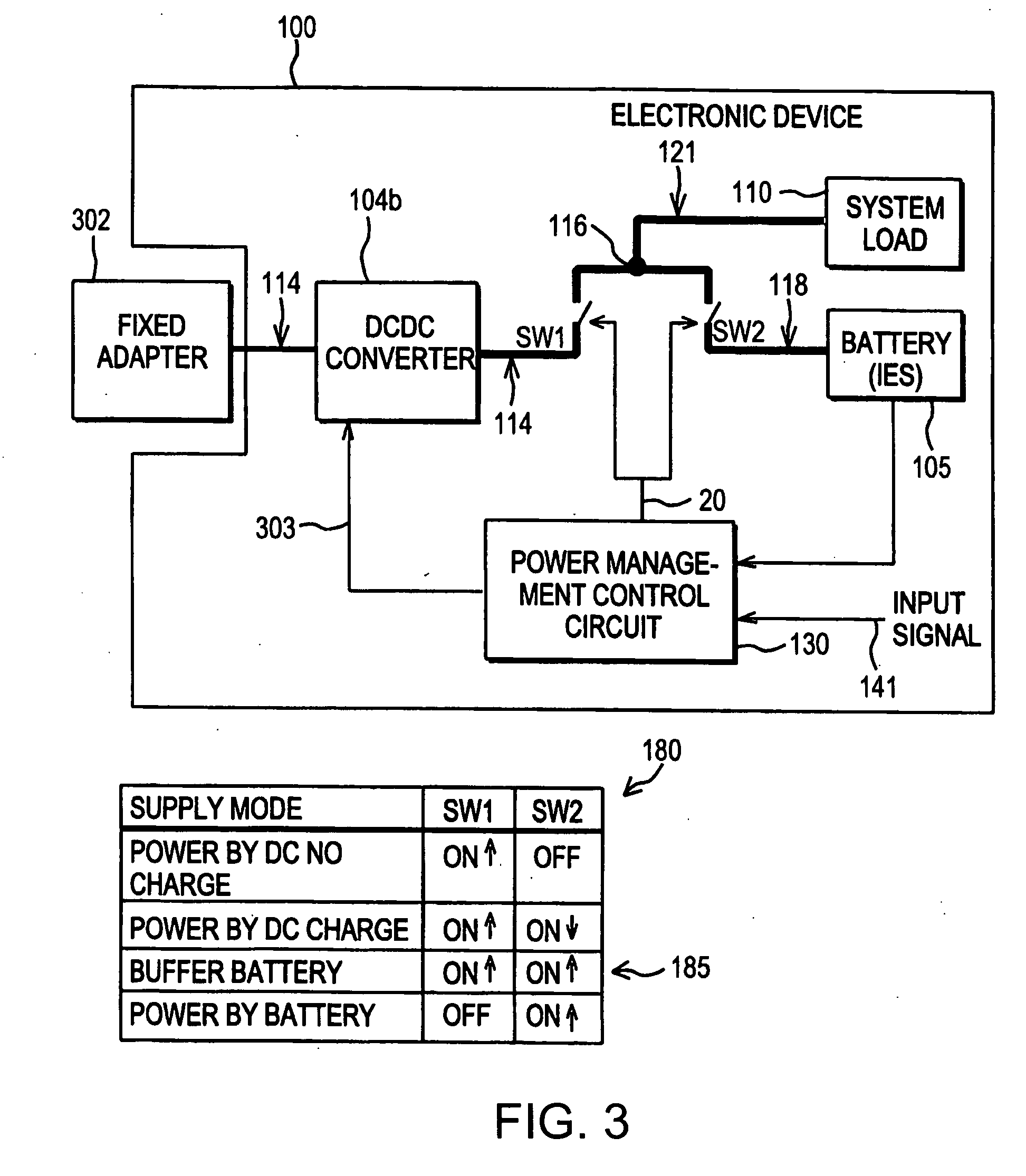Method and electronic circuit for efficient battery wake up charging
- Summary
- Abstract
- Description
- Claims
- Application Information
AI Technical Summary
Benefits of technology
Problems solved by technology
Method used
Image
Examples
Embodiment Construction
[0039]FIG. 1 illustrates a simplified block diagram of an electronic device 100 having a system load 110 capable of being powered by a controllable DC power source 104, a battery 105, or by both in parallel as the need arises as further detailed herein. A table 180 showing the position of switches SW1 and SW2 in various power supply modes is also illustrated. In one embodiment, the controllable DC power source 104 may be a controllable adapter as further detailed herein, e.g., an ACDC adapter, that provides the only power conversion necessary to deliver power to the system load 110 and the battery 105. As such, the need for an additional power conversion step (e.g., a DC to DC converter to provide a finely controlled output to the battery for charging) typically utilized in other power supply systems is obviated in this instance.
[0040] The electronic device 100 may be any variety of devices known in the art such as a laptop computer, cell phone, personal digital assistant, power to...
PUM
 Login to View More
Login to View More Abstract
Description
Claims
Application Information
 Login to View More
Login to View More - R&D
- Intellectual Property
- Life Sciences
- Materials
- Tech Scout
- Unparalleled Data Quality
- Higher Quality Content
- 60% Fewer Hallucinations
Browse by: Latest US Patents, China's latest patents, Technical Efficacy Thesaurus, Application Domain, Technology Topic, Popular Technical Reports.
© 2025 PatSnap. All rights reserved.Legal|Privacy policy|Modern Slavery Act Transparency Statement|Sitemap|About US| Contact US: help@patsnap.com



